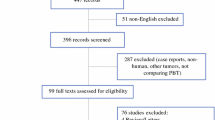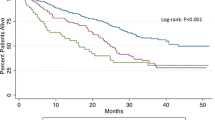Abstract
Background
Specific data are needed regarding the impact of transfusion on operative complications in pancreatectomy. The objectives of this study were to determine risk factors for transfusion and to evaluate the potential association between transfusion and operative complications in elective pancreatectomy procedures.
Study Design
We reviewed our institution’s pancreatectomy and ACS-NSQIP databases. Multivariate analysis was used to determine clinicopathologic risk factors predictive of transfusion, and then a transfusion propensity score was developed to evaluate the impact of transfusion on post-pancreatectomy complications.
Results
Of the 173 patients who were treated from September 2007 to September 2011, 78 patients (45 %) were transfused ≥ 1 unit of blood (median, 3.0 units; range, 1–55). Risk factors for transfusion included increasing Body Mass Index (BMI), smoking, increasing mortality risk score, preoperative anemia, intraoperative blood loss, and benign pathology. After controlling for these risk factors using a transfusion propensity score, transfusion was an independent predictor of increased complications, infectious complications, and hospital costs.
Conclusions
Multiple factors are predictive of transfusion in pancreatectomy, including increasing BMI and smoking. When controlling for transfusion propensity based on these risk factors, RBC transfusion is associated with worse operative outcomes including infectious complications. Development of protocols and strategies to minimize unnecessary transfusion in pancreatectomy are justified.



Similar content being viewed by others
Abbreviations
- RBC:
-
Red blood cell
- ACS-NSQIP:
-
American College of Surgeons National Surgical Quality Improvement Program
- CT:
-
Computed tomography
- ASA:
-
American Society of Anesthesiology
References
Habib RH, Zacharias A, Schwann TA, et al. Role of hemodilutional anemia and transfusion during cardiopulmonary bypass in renal injury after coronary revascularization: implications on operative outcome. Crit Care Med 2005;33:1749–56.
Koch CG, Li L, Duncan AI, et al. Morbidity and mortality risk associated with red blood cell and blood-component transfusion in isolated coronary artery bypass grafting. Crit Care Med 2006;34:1608–16.
Koch CG, Li L, Duncan AI, et al. Transfusion in coronary artery bypass grafting is associated with reduced long-term survival. Ann Thorac Surg 2006;81:1650–7.
Murphy GJ, Reeves BC, Rogers CA, Rizvi SI, Culliford L, Angelini GD. Increased mortality, postoperative morbidity, and cost after red blood cell transfusion in patients having cardiac surgery. Circulation 2007;116:2544–52.
Kneuertz PJ, Patel SH, Chu CK, et al. Effects of perioperative red blood cell transfusion on disease recurrence and survival after pancreaticoduodenectomy for ductal adenocarcinoma. Ann Surg Oncol 2011;18:1327–34.
Acheson AG, Brookes MJ, Spahn DR. Effects of allogeneic red blood cell transfusions on clinical outcomes in patients undergoing colorectal cancer surgery: a systematic review and meta-analysis. Ann Surg 2012;256:235–44.
Katz SC, Shia J, Liau KH, et al. Operative blood loss independently predicts recurrence and survival after resection of hepatocellular carcinoma. Ann Surg 2009;249:617–23.
Vamvakas EC, Blajchman MA. Deleterious clinical effects of transfusion-associated immunomodulation: fact or fiction? Blood 2001;97:1180–95.
Fergusson D, Khanna MP, Tinmouth A, Hebert PC. Transfusion of leukoreduced red blood cells may decrease postoperative infections: two meta-analyses of randomized controlled trials. Can J Anaesth 2004;51:417–24.
Bernard AC, Davenport DL, Chang PK, Vaughan TB, Zwischenberger JB. Intraoperative transfusion of 1 U to 2 U packed red blood cells is associated with increased 30-day mortality, surgical-site infection, pneumonia, and sepsis in general surgery patients. J Am Coll Surg 2009;208:931–7, 7 e1-2; discussion 8–9.
Parikh P, Shiloach M, Cohen ME, et al. Pancreatectomy risk calculator: an ACS-NSQIP resource. HPB (Oxford) 2010;12:488–97.
Grobmyer SR, Pieracci FM, Allen PJ, Brennan MF, Jaques DP. Defining morbidity after pancreaticoduodenectomy: use of a prospective complication grading system. J Am Coll Surg 2007;204:356–64.
Grendar J, Shaheen AA, Myers RP, et al. Predicting in-hospital mortality in patients undergoing complex gastrointestinal surgery: determining the optimal risk adjustment method. Arch Surg 2012;147:126–35.
Bassi C, Dervenis C, Butturini G, et al. Postoperative pancreatic fistula: an international study group (ISGPF) definition. Surgery 2005;138:8–13.
Taheri PA, Butz D, Griffes LC, Morlock DR, Greenfield LJ. Physician impact on the total cost of care. Ann Surg 2000;231:432–5.
Hebert PC, Wells G, Blajchman MA, et al. A multicenter, randomized, controlled clinical trial of transfusion requirements in critical care. Transfusion Requirements in Critical Care Investigators, Canadian Critical Care Trials Group. N Engl J Med 1999;340:409–17.
Carless PA, Henry DA, Carson JL, Hebert PP, McClelland B, Ker K. Transfusion thresholds and other strategies for guiding allogeneic red blood cell transfusion. Cochrane Database Syst Rev 2010:CD002042.
Busch OR, Hop WC, Hoynck van Papendrecht MA, Marquet RL, Jeekel J. Blood transfusions and prognosis in colorectal cancer. N Engl J Med 1993;328:1372–6.
Heiss MM, Mempel W, Delanoff C, et al. Blood transfusion-modulated tumor recurrence: first results of a randomized study of autologous versus allogeneic blood transfusion in colorectal cancer surgery. J Clin Oncol 1994;12:1859–67.
Shorr AF, Duh MS, Kelly KM, Kollef MH. Red blood cell transfusion and ventilator-associated pneumonia: A potential link? Crit Care Med 2004;32:666–74.
Jensen LS, Andersen AJ, Christiansen PM, et al. Postoperative infection and natural killer cell function following blood transfusion in patients undergoing elective colorectal surgery. Br J Surg 1992;79:513–6.
Vamvakas EC. Possible mechanisms of allogeneic blood transfusion-associated postoperative infection. Transfus Med Rev 2002;16:144–60.
Ferraris VA, Davenport DL, Saha SP, Austin PC, Zwischenberger JB. Surgical outcomes and transfusion of minimal amounts of blood in the operating room. Arch Surg 2012;147:49–55.
Glance LG, Dick AW, Mukamel DB, et al. Association between intraoperative blood transfusion and mortality and morbidity in patients undergoing noncardiac surgery. Anesthesiology 2011;114:283–92.
House MG, Fong Y, Arnaoutakis DJ, et al. Preoperative predictors for complications after pancreaticoduodenectomy: impact of BMI and body fat distribution. J Gastrointest Surg 2008;12:270–8.
Gaujoux S, Torres J, Olson S, et al. Impact of Obesity and Body Fat Distribution on Survival After Pancreaticoduodenectomy for Pancreatic Adenocarcinoma. Ann Surg Oncol 2012.
Fischer M, Matsuo K, Gonen M, et al. Relationship between intraoperative fluid administration and perioperative outcome after pancreaticoduodenectomy: results of a prospective randomized trial of acute normovolemic hemodilution compared with standard intraoperative management. Ann Surg 2010;252:952–8.
Mezhir JJ, Brennan MF, Baser RE, et al. A matched case–control study of preoperative biliary drainage in patients with pancreatic adenocarcinoma: routine drainage is not justified. J Gastrointest Surg 2009;13:2163–9.
Winter JM, Cameron JL, Campbell KA, et al. Does pancreatic duct stenting decrease the rate of pancreatic fistula following pancreaticoduodenectomy? Results of a prospective randomized trial. J Gastrointest Surg 2006;10:1280–90; discussion 90.
Goh BK, Tan YM, Chung YF, et al. Critical appraisal of 232 consecutive distal pancreatectomies with emphasis on risk factors, outcome, and management of the postoperative pancreatic fistula: a 21-year experience at a single institution. Arch Surg 2008;143:956–65.
Subhedar PD, Patel SH, Kneuertz PJ, et al. Risk factors for pancreatic fistula after stapled gland transection. Am Surg 2011;77:965–70.
Eshuis WJ, Hermanides J, van Dalen JW, et al. Early postoperative hyperglycemia is associated with postoperative complications after pancreatoduodenectomy. Ann Surg 2011;253:739–44.
Kelly KJ, Greenblatt DY, Wan Y, et al. Risk stratification for distal pancreatectomy utilizing ACS-NSQIP: preoperative factors predict morbidity and mortality. J Gastrointest Surg 2011;15:250–9, discussion 9–61.
Enestvedt CK, Diggs BS, Cassera MA, Hammill C, Hansen PD, Wolf RF. Complications nearly double the cost of care after pancreaticoduodenectomy. Am J Surg 2012;204:332–8.
Fukuda S, Oussoultzoglou E, Bachellier P, et al. Significance of the depth of portal vein wall invasion after curative resection for pancreatic adenocarcinoma. Arch Surg 2007;142:172–9; discussion 80.
Salvia R, Malleo G, Butturini G, et al. Perioperative management of patients undergoing pancreatic resection: Implementation of a care plan in a tertiary-care center. J Surg Oncol 2012.
Acknowledgments
The authors wish to thank Mary Belding-Schmidt for excellent construction and maintenance of our department’s ACS-NSQIP database. We also thank Mary Kay Brooks for her dedication and hard work to construct and maintain our institution’s pancreatectomy and transfusion databases. The authors dedicate this work to pancreatic cancer patients and their families.
Disclosures
The authors have no conflict of interest
Author information
Authors and Affiliations
Corresponding author
Additional information
This paper was presented in part at the Society for Surgery of the Alimentary Tract 53rd annual meeting May 2012, San Diego, California.
Rights and permissions
About this article
Cite this article
Sun, R.C., Button, A.M., Smith, B.J. et al. A Comprehensive Assessment of Transfusion in Elective Pancreatectomy: Risk Factors and Complications. J Gastrointest Surg 17, 627–635 (2013). https://doi.org/10.1007/s11605-013-2169-6
Received:
Accepted:
Published:
Issue Date:
DOI: https://doi.org/10.1007/s11605-013-2169-6




